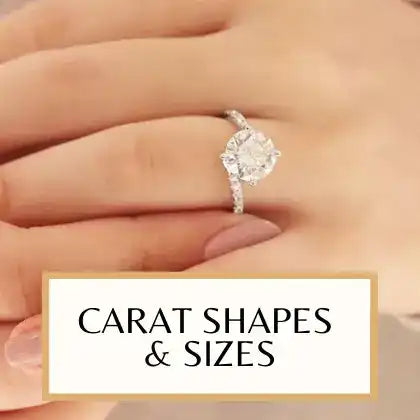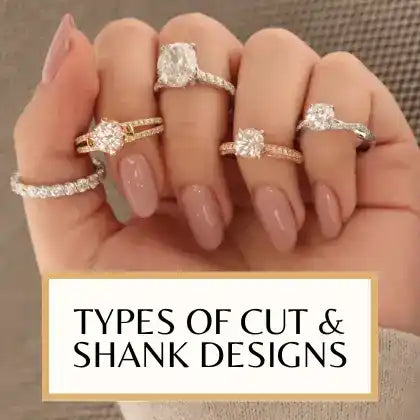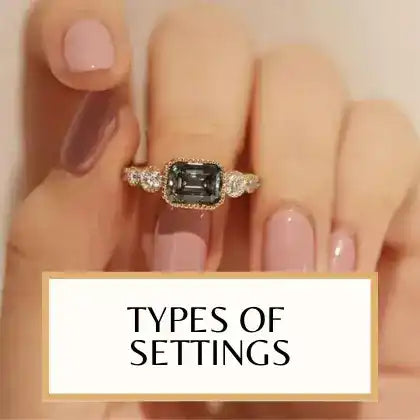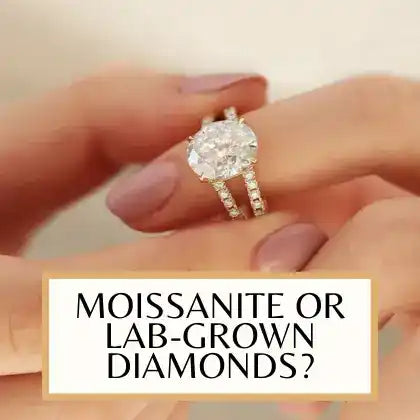GUIDE TO GET STARTED
GUIDE TO GET STARTED
CARAT SHAPES & SIZES
Carats are the standard measurement of a diamond’s weight. It is also a factor of consideration for the price. More than that, the size also plays an important part in making the ring look proportionate on the finger.
TYPES OF CUT & SHANK DESIGNS
Gems come in various shapes, from the classic round cut to fancier cuts such as oval, heart, and more. The cut of a diamond refers to how it’s faceted which determines how much light reflects off the surface and into your eye, creating sparkle. Explore the different cuts and shank designs to make your jewelry unique to you.
TYPES OF SETTINGS
There are many different types of settings for an engagement ring, each with its unique look and feel. From the classic solitaire to a fancier, multi-stone setting, there is a setting for every fiancée and budget.
Some popular settings include the bezel, halo, cluster, and prong. In most cases, the type of setting you choose will depend on the size of your diamond.
Bezel settings are prevalent for engagement rings with larger stones. These settings often encircle the diamond, allowing maximum exposure and visual impact. Halo settings are another popular option for larger diamonds. In this case, the diamond is mounted above a setting that holds it in place. Cluster settings are a good choice for smaller diamonds. The diamond is often set into a group of diamonds or other stones. Prong settings are another option for smaller diamonds. In this case, the diamond is set into one or more prongs that hold it in place.
MOISSANITE OR LAB-GROWN DIAMONDS?
Moissanite and lab-grown diamonds are both beautiful, durable, and sparkly stones that can be used in jewelry. However, they have some key differences that may make one a better fit for you than the other.
Sparkle
One of the most distinguishing features of moissanite is its sparkle. Due to its higher dispersion rate as compared to lab-grown diamonds, it reflects twice as much sparkle than the latter. As a result, when compared side by side with lab-grown diamonds, moissanite will have significantly more sparkle.
Hardness
Diamond is the hardest substance on Earth, coming in at a 10/10 on the Mohs scale. In contrast, moissanite has a hardness of 9.25/10, making it slightly softer than a diamond.
Cost
The biggest difference between these two stones is the cost. Lab-grown diamonds are significantly more expensive than moissanite stones. This is because they are harder, more conventional, and in demand.
Ultimately, both moissanite and lab-grown diamonds are viable when trying to make an eco-friendly choice. Both options are durable, have a reduced carbon footprint than mined diamonds, and are sustainable, making them excellent choices for an engagement or wedding ring. They also do not carry the ethical implications of mined diamonds. Depending on your budget and preferences, there is a diamond alternative that you can buy that will suit you perfectly.
 Skip to main content
Skip to main content





